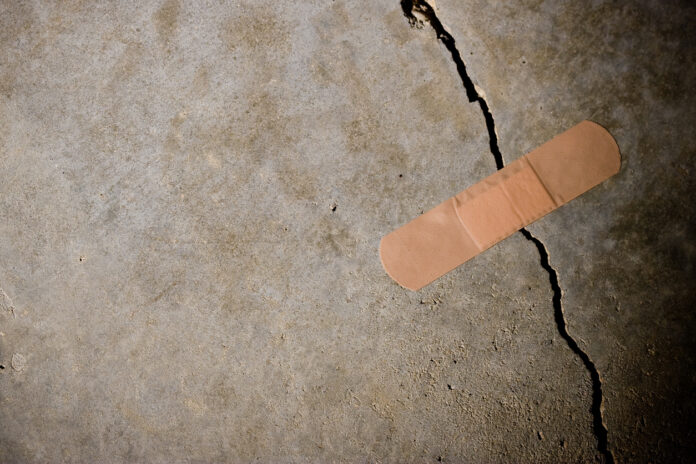Did you know that several risk factors can ruin your home’s foundation without your knowledge? If you aren’t aware of these risks, you could be in for a nasty surprise when your foundation starts crumbling. In this blog post, we will discuss the most common risk factors that can damage your home’s foundation. We will also provide tips on preventing these risks from causing any damage.
Overwatering:
The number one cause of a foundation problem is overwatering your lawn. When the ground around your home becomes oversaturated, it puts immense pressure on your foundation walls and can cause them to crack or even collapse. To avoid this, ensure you’re only watering your lawn long enough to give the roots a good soaking, and not so much water is pooling on the surface. But, how do you determine you are watering just enough? This depends on the place you live in and the type of soil around your home. For example:
-If you live in an area with high rainfall, you may not need to water your lawn. The natural rain will provide sufficient moisture for your plants.
-If you live in an area with low rainfall, you will need to water your lawn more often. But, be careful not to overwater as this can still damage your foundation.
-If you have clay soil around your home, it is important to water less frequently but for longer periods. This allows the water to seep deep into the ground instead of sitting on top of the clay and putting pressure on your foundation walls.
Drainage: One of the most common and least recognized risk factors for foundation damage is improper drainage. When water pools around your home’s foundation, it can seep into cracks and cause the soil to expand, putting pressure on the foundation. This can lead to cracks, settlement, and even collapse. You can do a few things to improve drainage around your home: make sure gutters are clean and functioning properly, redirect downspouts away from the foundation, and grade the ground around your home so that it slopes away from the foundation. If you live in an area with a high water table or flash flooding, you may need to install a sump pump to keep water away from your foundation.
Tree root growth: Who doesn’t love a bit of greenery on their house? Unfortunately, tree roots can wreak havoc on your foundation. As they grow and mature, tree roots will begin to push up against your foundation, causing cracks and damage. If you have trees on your property, have them regularly checked by a professional to ensure that their roots aren’t causing any problems. One of the things you need to know about trees is that simply cutting them down is not enough. Tree roots can continue to grow for years after the tree has been removed, so it’s important to have them professionally removed to avoid any further damage.
Invading Landscaping: With landscaping, the rule of thumb is that the further away plants are from your foundation, the better. Unfortunately, many homeowners mistake planting trees, bushes, and other vegetation too close to their homes. While these plants may look nice and add curb appeal, they can do a lot of damage to your foundation. The roots of these plants can grow underneath your foundation and cause cracks or even collapse completely. To avoid this, ensure all landscaping is at least two feet away from your foundation. If you have any concerns, consult with a professional landscape architect or contractor who can help you plan out your property in a way that won’t put your foundation at risk.
Substandard Construction: What makes a construction solid?
The answer to this question is key in understanding why some structures experience foundation failure while others do not. The strength of the construction depends on many factors: the quality of materials, workmanship, the design of the foundation, and how well the structure has been maintained over time.
One of the most important aspects of quality construction is compaction. Things are especially critical in areas with a high water table or expansive soils. Compaction ensures no void space for water or soil to migrate and cause instability. It also helps to prevent differential settling, which can occur when certain foundation parts settle more than others. Differential settling creates cracks and can lead to further damage.
Another important factor in quality construction is the use of proper materials. The type of soil, gravel, and concrete used can affect the stability of the foundation. For example, using clay-based soil for the foundation is not recommended because it expands when wet and shrinks when dry. This can cause cracking and instability.
Workmanship is also important in ensuring quality construction. Poorly trained or inexperienced workers can make mistakes that lead to foundation problems. For example, they may not properly compact the soil or may use substandard materials.
Finally, maintenance is important in preventing foundation problems. It’s important to have any cracks repaired promptly, so they don’t have a chance to worsen. Additionally, it’s important to keep an eye on the gutters and downspouts to ensure they are clear of debris so that water can drain away from the foundation.
If you’re concerned about any of the risk factors we’ve discussed or think your home might already have foundation damage, get in touch with a professional immediately. The sooner you address the problem, the easier and less expensive it will be to fix. Waiting too long can lead to extensive damage that is much more costly and difficult to repair. Don’t take chances with your biggest investment — get help if you think there might be a problem.



















